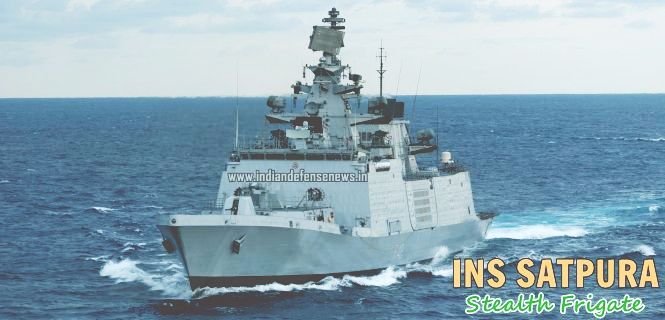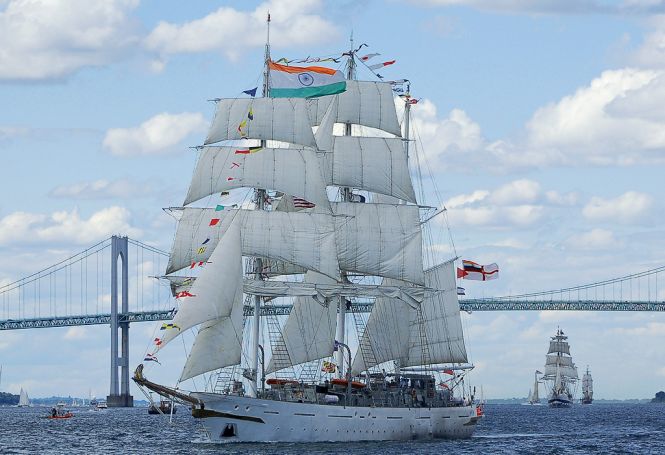sorcerer
Senior Member
- Joined
- Apr 13, 2013
- Messages
- 26,919
- Likes
- 98,471
Preparations Underway for International Fleet Review in Vizag
"54 countries have confirmed their participation. 24 warships from foreign countries and 24 foreign Naval chiefs, 90 foreign delegates will be attending IFR", Naval sources said
VISAKHAPATNAM: Preparations are in full swing for the International Fleet Review (IFR) to be held here from February 4 to 8.
Security has been beefed up for the mega-event which will see participation of top Naval officials across the globe, officials from Visakhapatnam district administration said today.
"54 countries have confirmed their participation. 24 warships from foreign countries and 24 foreign Naval chiefs, 90 foreign delegates will be attending IFR", Naval sources said.
President Pranab Mukherjee, Prime Minister Narendra Modi, Defence Minister Manohar Parrikar, Andhra Pradesh Chief Minister N Chandrababu Naidu will attend the event.
District Collector Visakhapatnam N Yuvraj reviewed the arrangements at the beach road and at the galleries which have the capacity to accommodate 20,000 spectators.
"Mukherjee would review the fleet on February 6. INS Sumitra, an indigenously built Naval offshore patrol vessel would be the Presidential Yacht and lead the President Column," Naval sources added.
However, they said the events will commence on February 4 with Chandrababu Naidu laying a wreath at the War Memorial at Rama Krishna beach here in remembrance of the martyrs of the 1971 Indo-Pak war.
Naidu also will also inaugurate the maritime exhibition, which will showcase various entrepreneurs in the maritime domain, they said. During the IFR, Modi is also scheduled to address the gathering and also release a book on the maritime heritage of India.
On February 7, a two-day 'International Maritime Conference' would be inaugurated by Parrikar on the theme 'partnering together for a secure maritime future'.
Source>>
"54 countries have confirmed their participation. 24 warships from foreign countries and 24 foreign Naval chiefs, 90 foreign delegates will be attending IFR", Naval sources said
VISAKHAPATNAM: Preparations are in full swing for the International Fleet Review (IFR) to be held here from February 4 to 8.
Security has been beefed up for the mega-event which will see participation of top Naval officials across the globe, officials from Visakhapatnam district administration said today.
"54 countries have confirmed their participation. 24 warships from foreign countries and 24 foreign Naval chiefs, 90 foreign delegates will be attending IFR", Naval sources said.
President Pranab Mukherjee, Prime Minister Narendra Modi, Defence Minister Manohar Parrikar, Andhra Pradesh Chief Minister N Chandrababu Naidu will attend the event.
District Collector Visakhapatnam N Yuvraj reviewed the arrangements at the beach road and at the galleries which have the capacity to accommodate 20,000 spectators.
"Mukherjee would review the fleet on February 6. INS Sumitra, an indigenously built Naval offshore patrol vessel would be the Presidential Yacht and lead the President Column," Naval sources added.
However, they said the events will commence on February 4 with Chandrababu Naidu laying a wreath at the War Memorial at Rama Krishna beach here in remembrance of the martyrs of the 1971 Indo-Pak war.
Naidu also will also inaugurate the maritime exhibition, which will showcase various entrepreneurs in the maritime domain, they said. During the IFR, Modi is also scheduled to address the gathering and also release a book on the maritime heritage of India.
On February 7, a two-day 'International Maritime Conference' would be inaugurated by Parrikar on the theme 'partnering together for a secure maritime future'.
Source>>



































